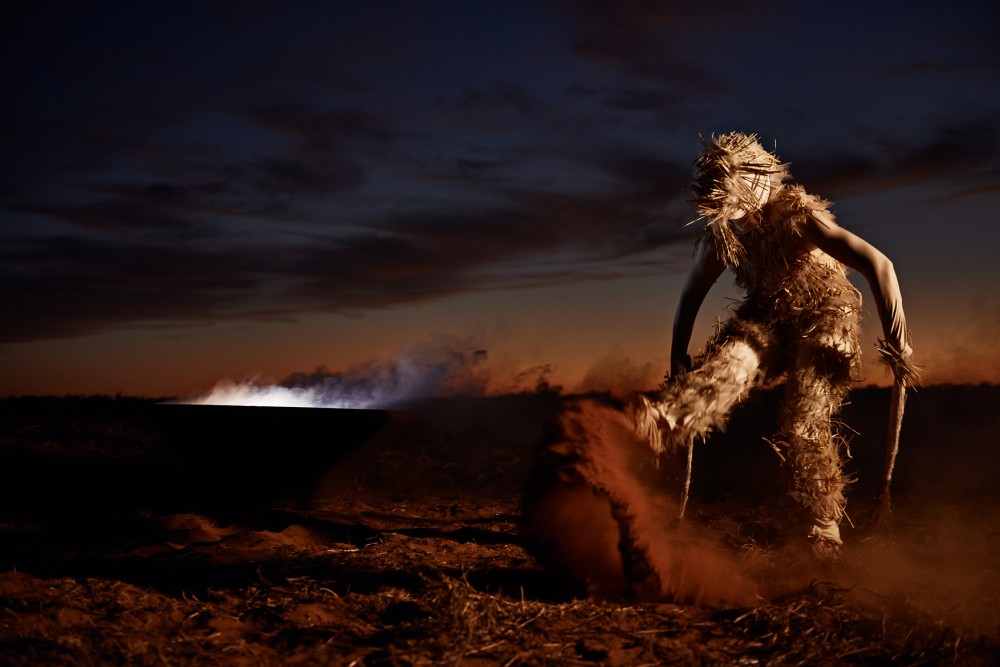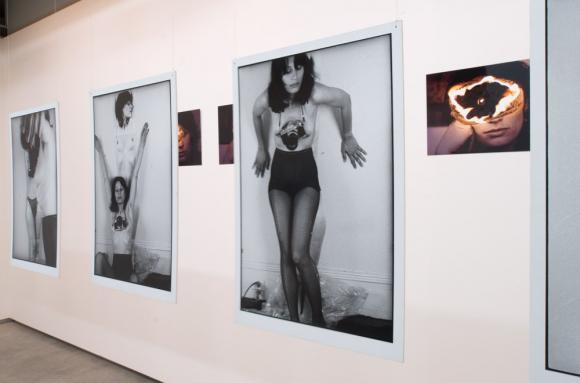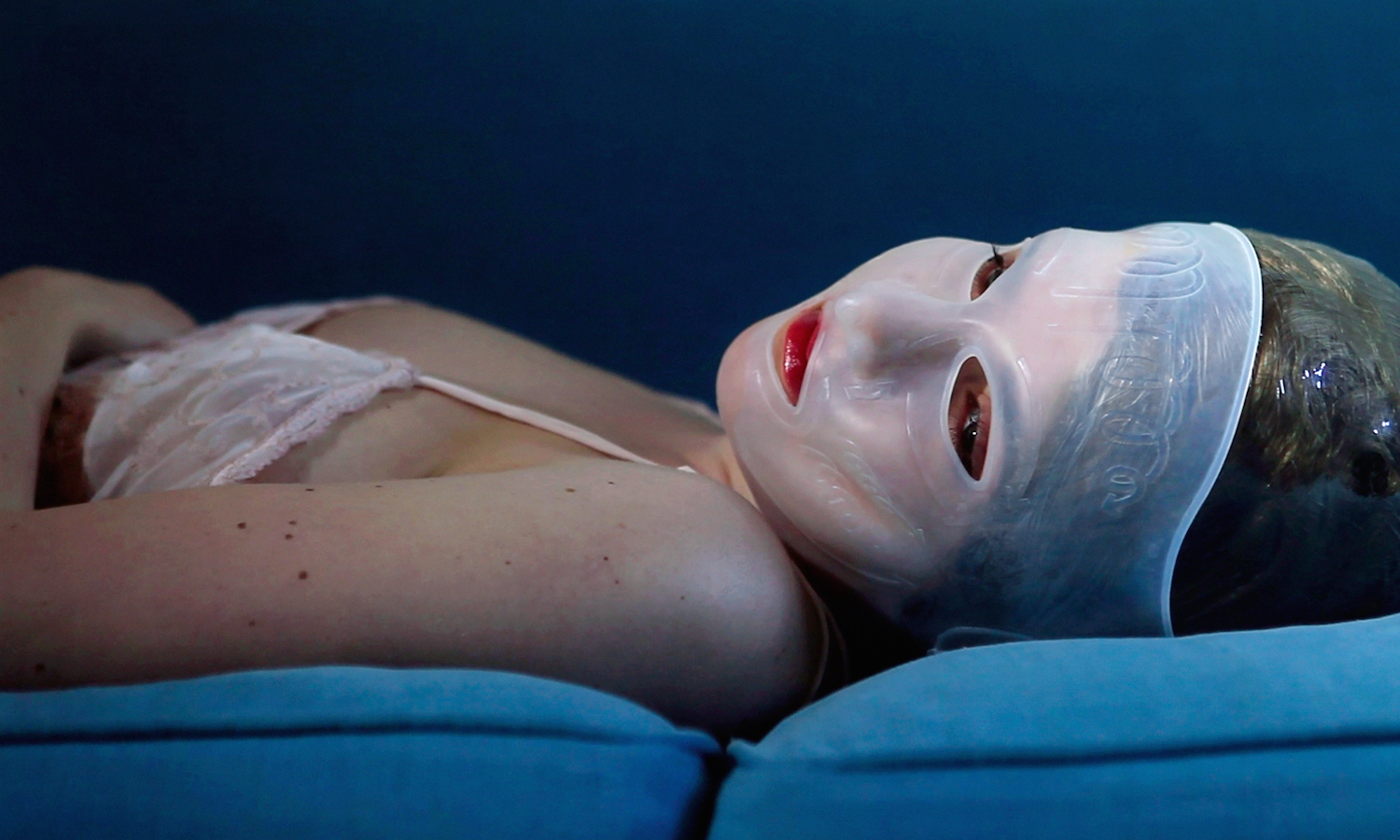Rather than physical space, the theme of Environment can also be considered within a psychological context where artists construct or imagine an environment that they respond to in creative ways using photography, performance and film.
Using binary opposites we can think of these environments as;
exterior/ interior
private/ public
masculin/ feminine
physical/ psychological
Currently visiting Jersey as part of the Archisle international artist-in-residence programme is Clare Rae from Melbourne, Australia. Clare will be researching the Claude Cahun archive, shooting new photography and film in Jersey and contributing to the educational programme. Clare Rae produces photographs and moving image works that interrogate representations of the female body via an exploration of the physical environment.




Clare will give an artist talk contextualising her practice, covering recent projects that have engaged with notions of architecture and the body, and the role of performative photography in her work. Clare will discuss her research on these areas, specifically her interest in artists such as Claude Cahun, Francesca Woodman and Australian performance artist Jill Orr. Clare will also discuss her photographic methodologies and practices, giving an analysis of her image making techniques, and final outcomes.
All students MUST attend her public lecture on Wed 22 March at Jersey Museum 5:30-7:00 pm. Here is a link to her Talk
Saturday 18 March Clare also ran an Archisle workshop on Body & Architecture in Photography. The workshop consisted of a talk by Clare, providing insight into her photographic practice focusing on recent projects that have engaged with the body and performance.
Homework: Here is the task that she asked participants to respond to. All students must complete this task within one lesson and upload 3 images with an evaluation by Mon 27 March.
Untitled Actions: exploring performative photography
Outcomes for participants:
1. Produce a self-portrait, in any style you like. Consider the history of self-portraiture, and try to create an image that alludes to, (or evades?) your identity.
2. Produce a performative photograph, considering the ideas presented on liveness, performance documentation and Cartier-Bresson’s decisive moment. ‘Captured’ vs. pre-meditated?
3. Produce a photograph that engages the body with the physical environment. Think of architecture, light, texture, and composition to create your image.
For further context lets consider some of these artists’ influences on Clare’s practice.
Claude Cahun, born Lucy Schwob was a French photographer, sculptor, and writer. She is best known for her self-portraits in which she assumes a variety of personas, including dandy, weight lifter, aviator, and doll.

In this image, Cahun has shaved her head and is dressed in men’s clothing. She once explained: “Under this mask, another mask; I will never finish removing all these faces.”1 (Claude Cahun, Disavowals, London 2007, p.183)

Cahun was friends with many Surrealist artists and writers; André Breton once called her “one of the most curious spirits of our time.”2 (See Guardian article below by Gavin James Bower, “Claude Cahun: Finding a Lost Great,)
While many male Surrealists depicted women as objects of male desire, Cahun staged images of herself that challenge the idea of the politics of gender. Cahun was championing the idea of gender fluidity way before the hashtags of today. She was exploring her identity, not defining it. Her self-portraits often interrogates space, such as domestic interiors and Jersey landscapes using rock crevasses and granite gate posts.



The Jersey Heritage Trust collection represents the largest repository of the artistic work of Cahun who moved to the Jersey in 1937 with her stepsister and lover Marcel Moore. She was imprisoned and sentenced to death in 1944 for activities in the resistance during the Occupation. However, Cahun survived and she was almost forgotten until the late 1980s, and much of her and Moore’s work was destroyed by the Nazis, who requisitioned their home. CaHun died in 1954 of ill health (some contribute this to her time in German captivity) and Moore killed herself in 1972. They are both buried together in St Brelade’s churchyard.
A few articles to read:
https://www.theguardian.com/books/2012/feb/14/claude-cahun-finding-great
http://www.bbc.com/culture/story/20160629-claude-cahun-the-trans-artist-years-ahead-of-her-time
Link to Jersey Heritage: https://www.jerseyheritage.org/collection-items/claude-cahun
For further feminist theory and context read the following essay:
Amelia Jones: The “Eternal Return”: Self-Portrait Photography as Technology of Embodiment – pdf Jones_Eternal Return
Currently the National Portrait Gallery in London brings the work of Claude Cahun and Gillian Wearing together for the first time. Slipping between genders and personae in their photographic self-images, Wearing and Cahun become others while inventing themselves. “We were born in different times, we have different concerns, and we come from different backgrounds. She didn’t know me, yet I know her,” Wearing says, paying homage to Cahun and acknowledging her presence. The bigger question the exhibition might ask is less how we construct identities for ourselves than what is this thing called presence?
Gillian Wearing and Claude Cahun: Behind the Mask, Another Mask is at the National Portrait Gallery, London, 9 March-29 May
Behind a mask, Wearing is being Cahun. Previously she has re-enacted photographs of Andy Warhol in drag, the young Diane Arbus with a camera, Robert Mapplethorpe with a skull-topped cane, hard-bitten New York crime photographer Weegee wreathed in cigar-smoke. Among these doubles, you know Wearing is in the frame somewhere, under the silicon mask and the prosthetics, the wigs and makeup and the lighting. Going through her own family albums, she has become her own mother and her father. It is a surprise she has never got lost in this hall of time-slipping mirrors, among her own self-images and the faces she has adopted. Wearing has got others to play her game, too – substituting their own adult voices with those of a child, putting on disguises while confessing their secrets on video.

Masquerading as a myriad of characters, Cindy Sherman (American, born 1954) invents personas and tableaus that examine the construction of identity, the nature of representation, and the artifice of photography. To create her images, she assumes the multiple roles of photographer, model, makeup artist, hairdresser, and stylist. Whether portraying a career girl, a blond bombshell, a fashion victim, a clown, or a society lady of a certain age, for over thirty-five years this relentlessly adventurous artist has created an eloquent and provocative body of work that resonates deeply in our visual culture.
For an overview of Sherman’s incredible oeuvre see Museum Of Modern Art’s dedicated site made at a major survey exhibition of her work in 2012.

This exhibition surveys Sherman’s career, from her early experiments as a student in Buffalo in the mid-1970s to a recent large-scale photographic mural, presented here for the first time in the United States. Included are some of the artist’s groundbreaking works—the complete “Untitled Film Stills” (1977–80) and centerfolds (1981), plus the celebrated history portraits (1988–90)—and examples from her most important series, from her fashion work of the early 1980s to the break-through sex pictures of 1992 to her monumental 2008 society portraits.
Sherman works in series, and each of her bodies of work is self-contained and internally coherent; yet there are themes that have recurred throughout her career. The exhibition showcases the artist’s individual series and also presents works grouped thematically around such common threads as cinema and performance; horror and the grotesque; myth, carnival, and fairy tales; and gender and class identity.
Further reading and context:
Krauss_Rosalind_E_Bachelors
Johanna Burton (ed) Cindy Sherman, October Files, MIT Press From
A few articles/ reviews
Hal Foster https://www.lrb.co.uk/v34/n09/hal-foster/at-moma
The Guardian: https://www.theguardian.com/artanddesign/2016/jul/03/cindy-sherman-interview-retrospective-motivation
Shannon O’Donnell and her book: Shrinking Violet
Here is link to Shannon’s blog showing all her research, analysis, recordings, experimentation and evaluations
Chrissy Knight portraits of Women of Yesterday
Clare Rae sites other influences in her practice, particularly artists living and working in Australia such as Jill Orr and Julia Rrap.
Jill Orr is a contemporary artist based in Melbourne. She is best known for her works in performance, photography, video and installation works that often explore the body, and its positioning within social, political and environmental contexts. While Orr’s works are predominantly site-specific, the recording of her works are regarded as equally significant aspects of her working practice.


Jill Orr’s work centres on issues of the psycho- social and environmental where she draws on land and identities as they are shaped in, on and with the environment be it country or urban locales.
Link to Jill Orr’s website
Julie Rrap’s involvement with body art and performance in the mid-70s in Australia continued to influence her practice as it expanded into photography, painting, sculpture and video in an on-going project concerned with representations of the body.


Link to Rrap’s website
Another site of influence to Clare Rae is Francesca Woodman. At the age of thirteen Francesca Woodman took her first self-portrait. From then, up until her untimely death in 1981, aged just 22, she produced an extraordinary body of work. Comprising some 800 photographs, Woodman’s oeuvre is acclaimed for its singularity of style and range of innovative techniques. From the beginning, her body was both the subject and object in her work.
Here is an article in the Guardian https://www.theguardian.com/artanddesign/2014/aug/31/searching-for-the-real-francesca-woodman
British Journal of Photography http://www.bjp-online.com/2016/01/on-being-an-angel-francesca-woodman-foam-amsterdam/
For those interested in exploring identities, stereotypes, gender, alter-egos through self-portraiture using varies techniques such slow shutters-speeds, use of dressing up, make-up, props, masks, locations (mine-en-scene) Often these images are questioning ideas around truth, fantasy or fiction an involve artists making images in both interior and exterior environments
Juno Calypso won the recent BJP International Award 2016 and is currently exhibiting in London at TJ Boulting Gallery. It was an old picture of a lurid pink bathroom that inspired London-born photographer Juno Calypso to spend a week honeymooning solo at a Pennsylvania love hotel. “My first thought was that I’d be out of my mind to go all that way to take some pictures, but after failing to find anything similar in Europe I knew I’d be even crazier not to go,” Calypso says.


Surrounded by heart-shaped tubs, sparkling mirror lights and her signature anachronistic beauty devices, the Penn Hills Resort became the setting of The Honeymoon, Calypso’s new series of photographs exploring the absurdities of female identity and sexuality.


Read article here and also this article on artists exploring their alter-egos and inner selves in photography.
Anne Hardy’s photographs picture depopulated rooms that suggest surreal fictions. Working in her studio, Hardy builds each of her sets entirely from scratch; a labour-intensive process of constructing an empty room, then developing its interior down to the most minute detail. Using the transient nature of photography, Hardy’s images withhold the actual experience of her environments, allowing our relationship with them to be in our imagination.




Tableaux Photography and Staged environments.
Tableaux photography always have an element of performing for the camera. See artists such as, Tom Hunter, Jeff Wall, Gregory Crewdson, Duane Michaels, Sam Taylor Johnson (former Sam Taylor-Wood), Hannah Starkey, Tracy Moffatt, Vibeke Tandberg






Performance and Photography
For those of you who would like to explore Performance and Photography further here is a link to a project we did in 2015 when Tom Pope, was in Jersey as the Archisle Artist-in-Residence.
Study the blog posts below when we were exploring Pope’s practice and the themes of Chance, Change and Challenge . You should be able to find some starting points here.
Here are some of the key concepts that underpin Pope’s work and practice:
Performance, Photography, Chance, Humour/Fun, Repetition, Play
Psychogeography, dérive (drifting), Situationism (link to a ppt: Situationism), Dadaism, Public/Private, Challenging authority, Failure, DIY/Ad-hoc approach, Collaboration, Audience participation
For example, write a manifesto with a set of rules (6-10) that provide a framework for your performance related project. Describe in detail how you are planning on developing your work and ideas. Think about what you want to achieve, what you want to communicate, how your ideas relate to the theme ENVIRONMENT and how you are going to approach this task in terms of form, technique and subject-matter.
A list of art movements that you may use as contextual research. Many of them also produced Manifestos:
Dadaism, Futurism, Surrealism, Situationism, Neo-dadaism, Land/Environmental art, Performance art/Live art, Conceptualism, Experimental filmmaking/ Avant-garde cinema (those studying Media make links with your unit on Experimental film)
Here are a list of artists/ photographers that may inspire you:
Vito Acconci, John Baldessari, Yves Klein, Bas Jan Ader, Erwin Wurm, Chris Arnatt, Richard Long, Hamish Fulton, Joseph Beuys, Chris Burden, Francis Alÿs, , Sophie Calle , Nikki S Lee, Claude Cahun, Dennis Oppenheim, Bruce Nauman, Allan Kaprow, Mark Wallinger, Gillian Wearing, Marcel Duchamp and the Readymade, Andy Warhol’s film work, Steve McQueen, Sam Taylor-Johnson, Marina Abramovic, Pipilotti Rist, Luis Bunuel/ Salvatore Dali: , Le Chien Andalou, Dziga Vertov: The Man with a Movie Camera











